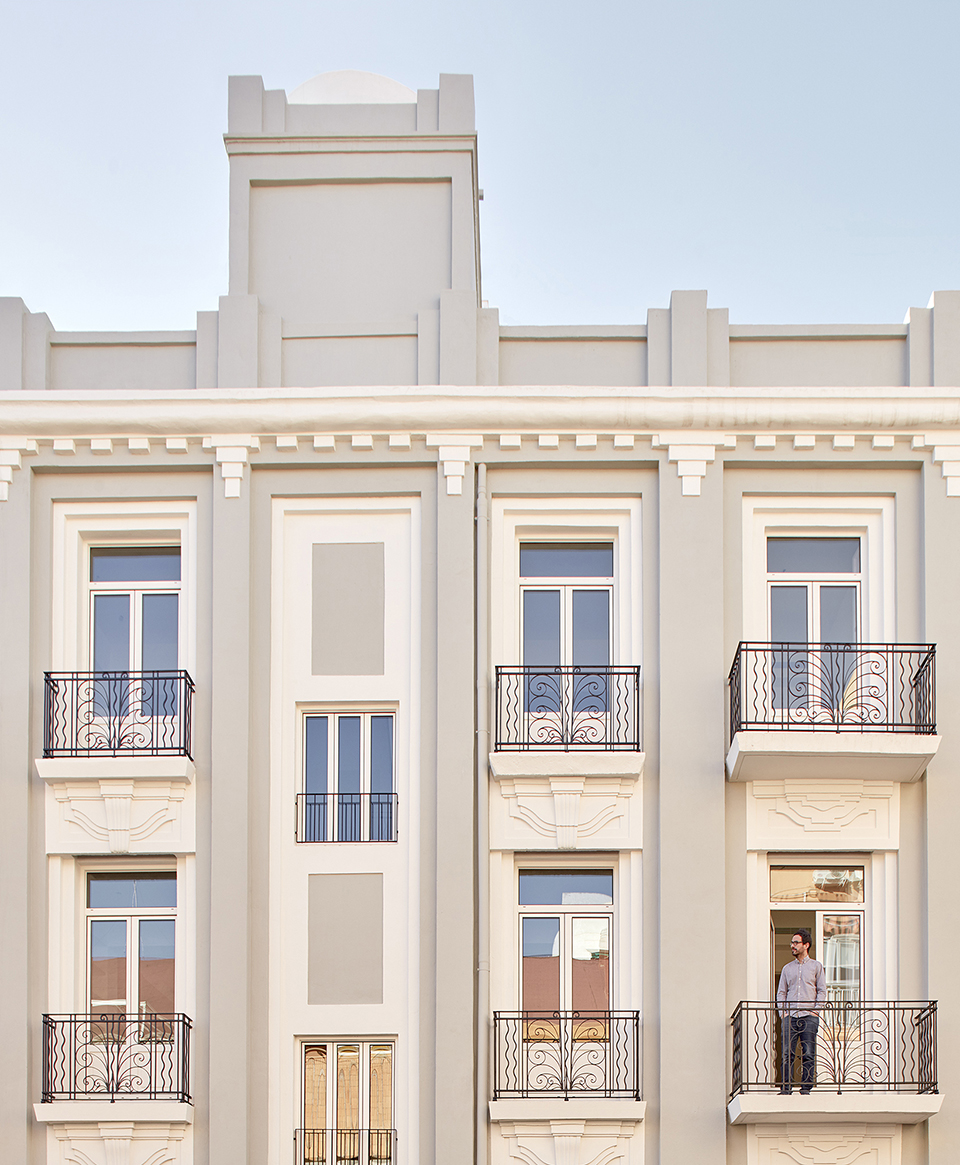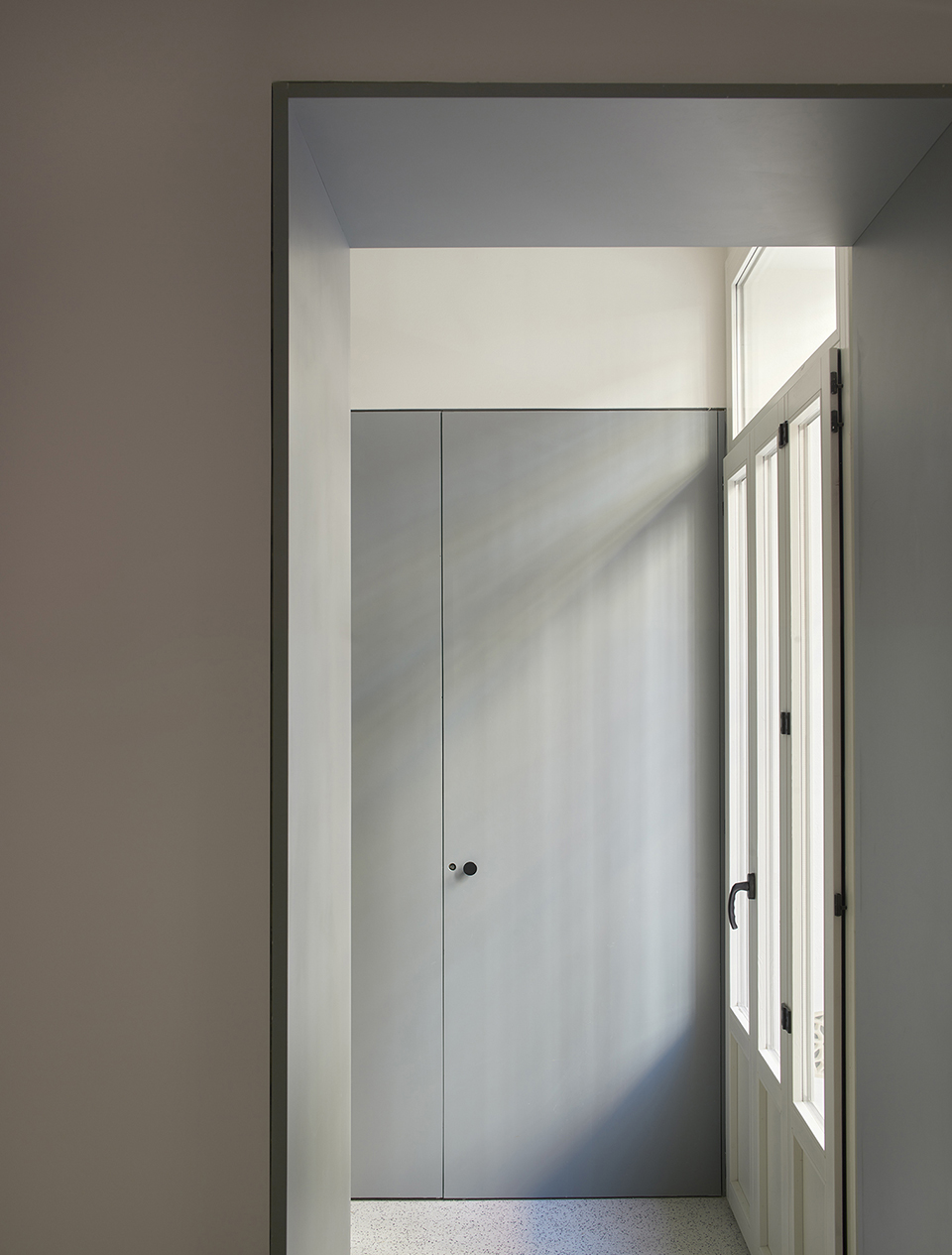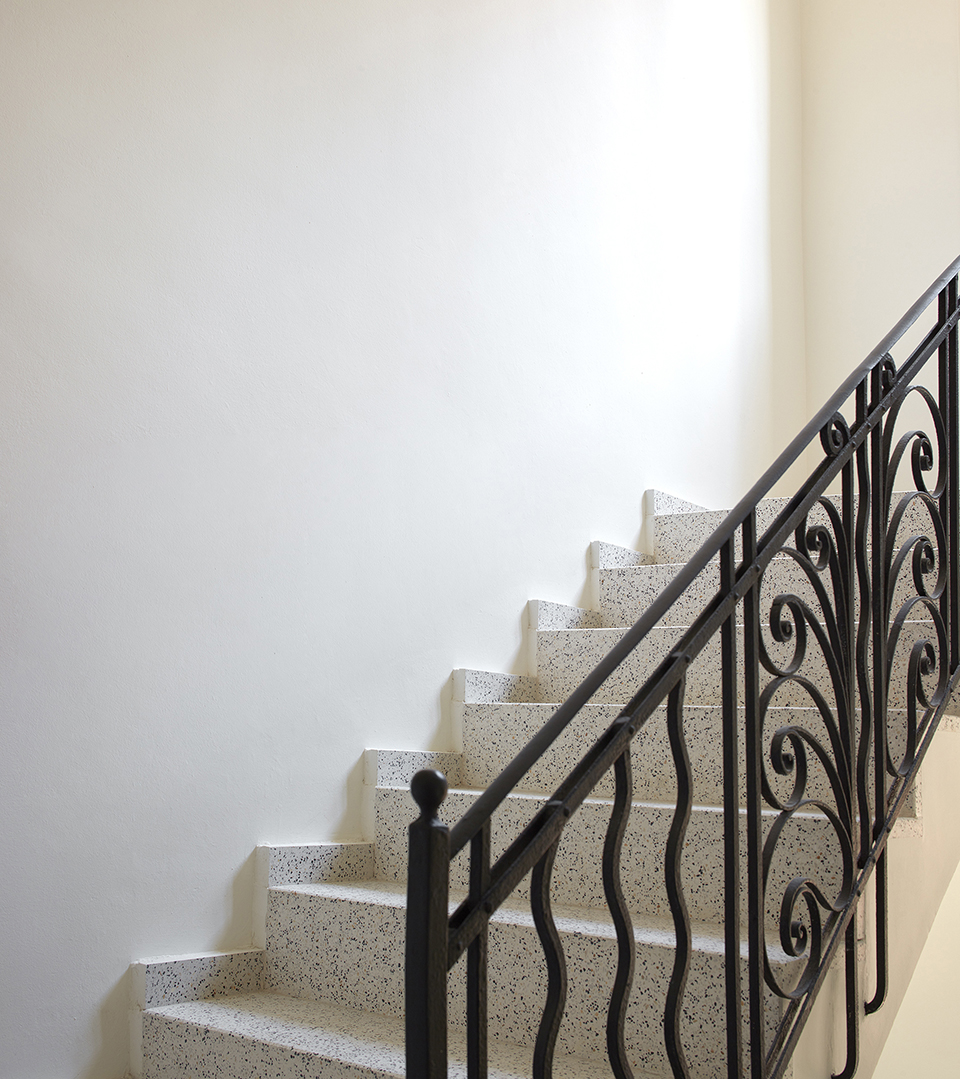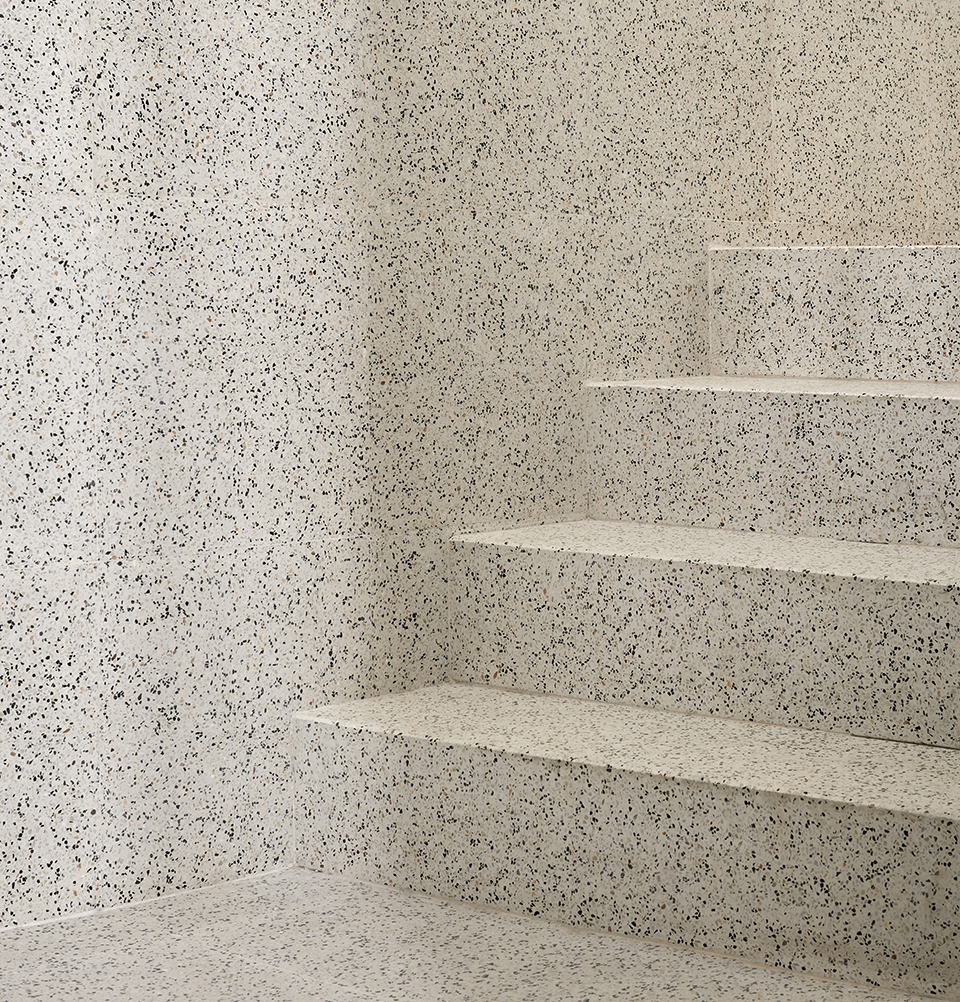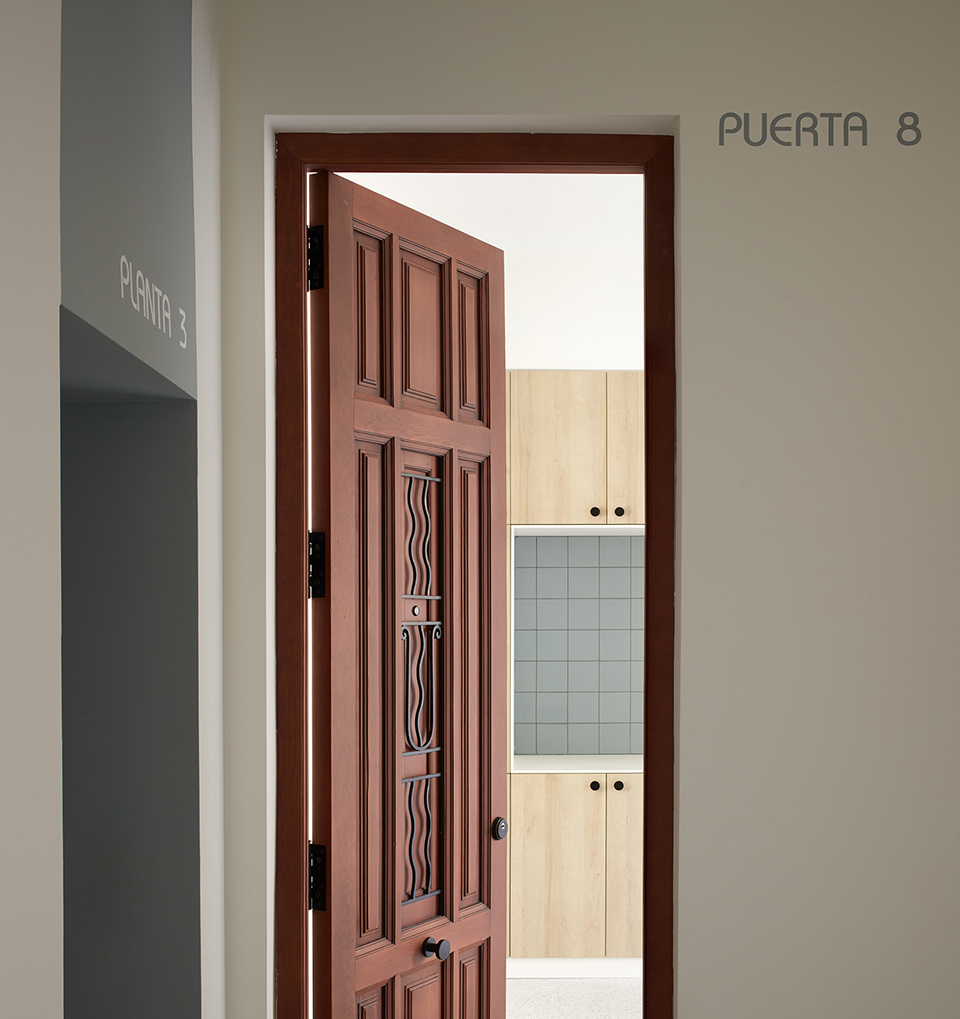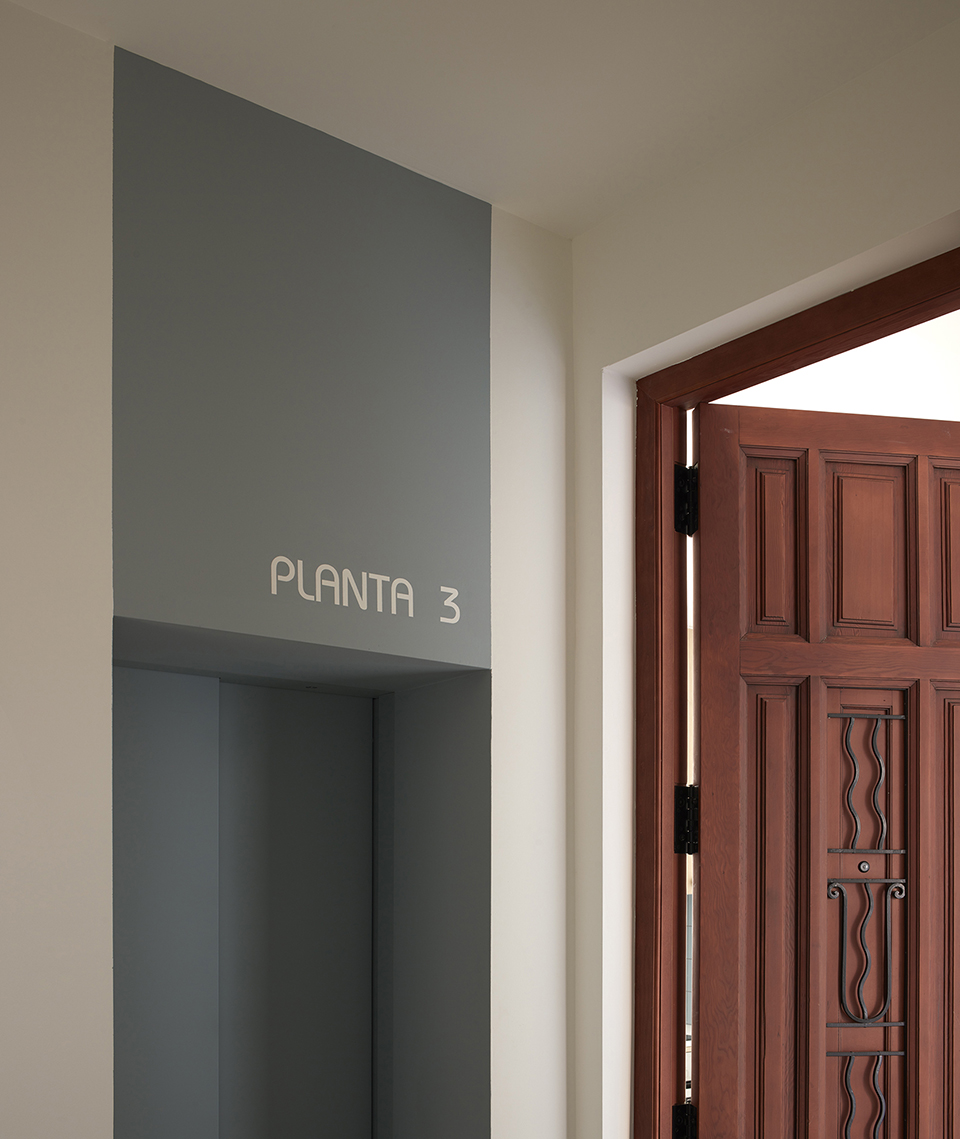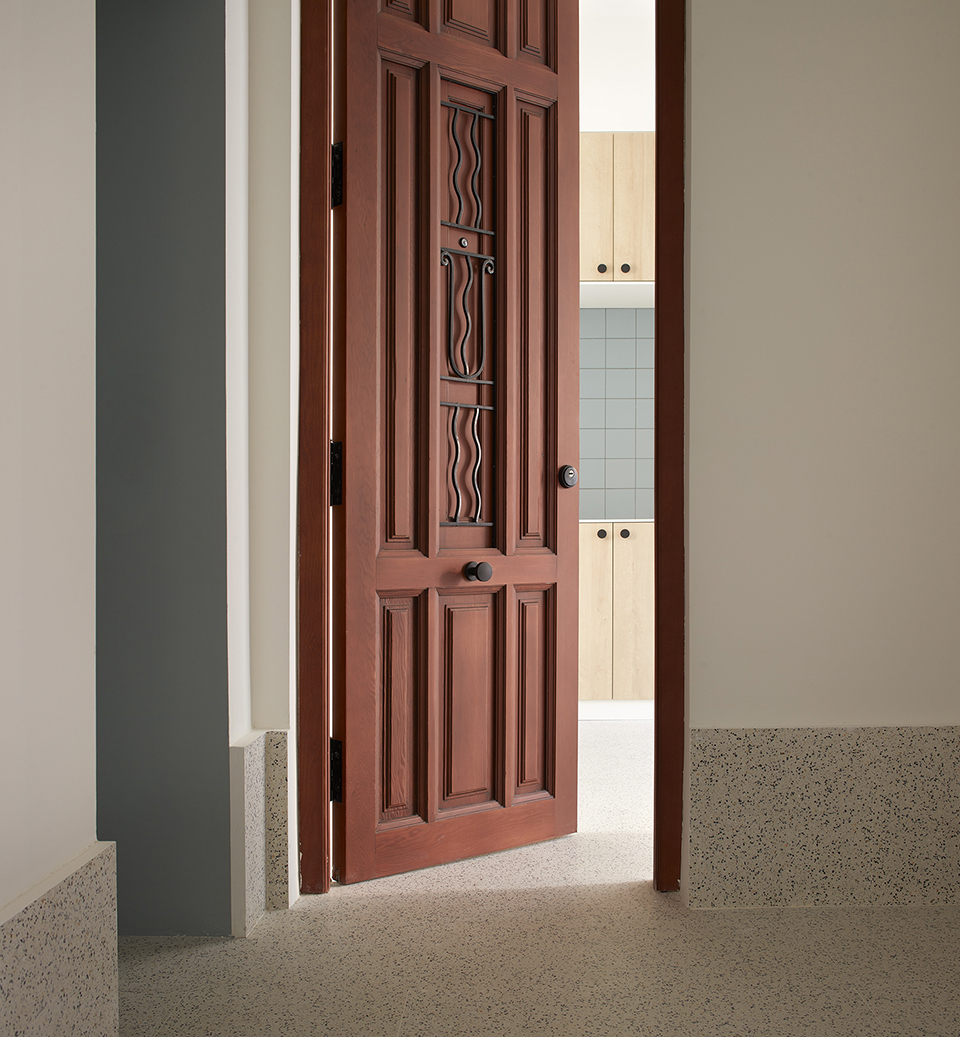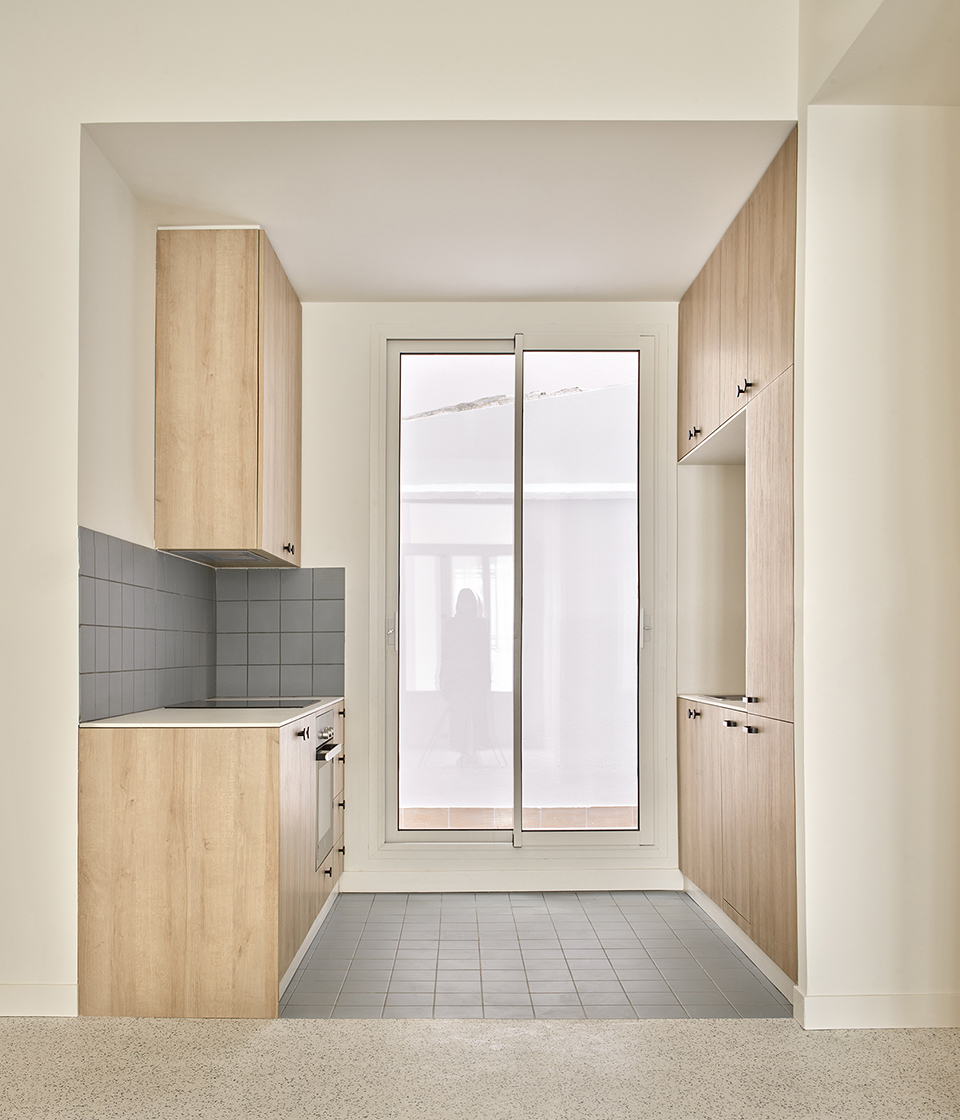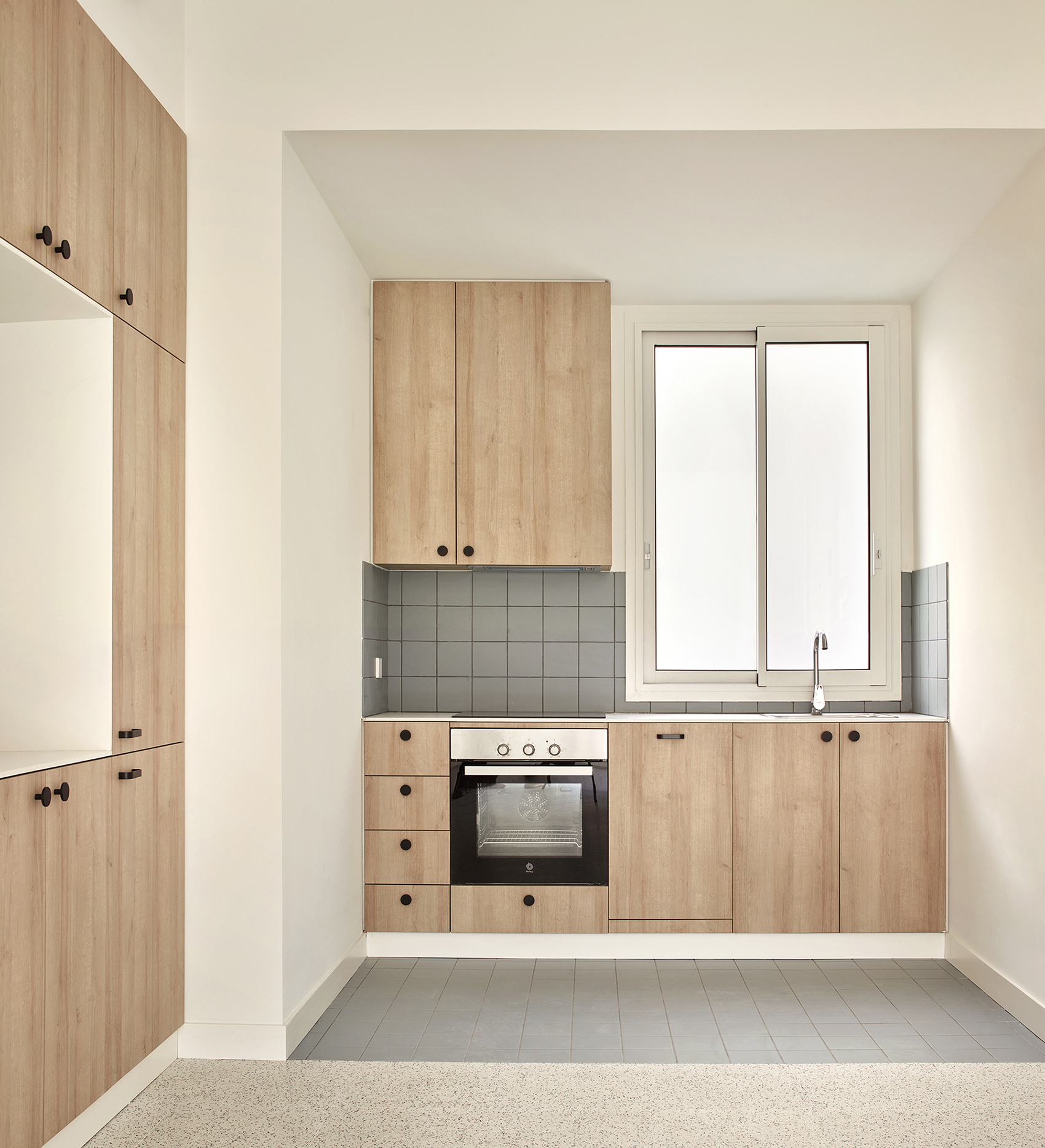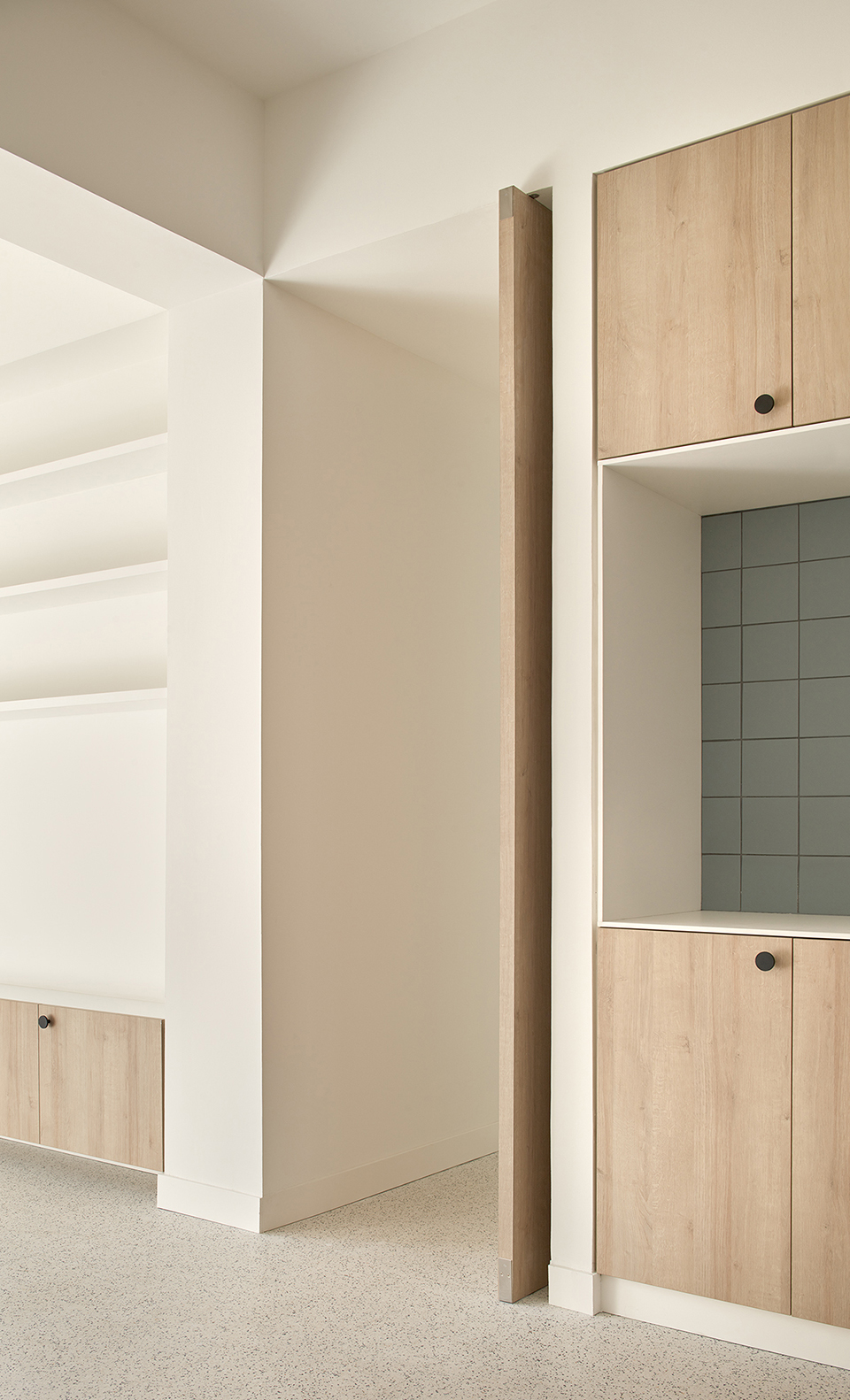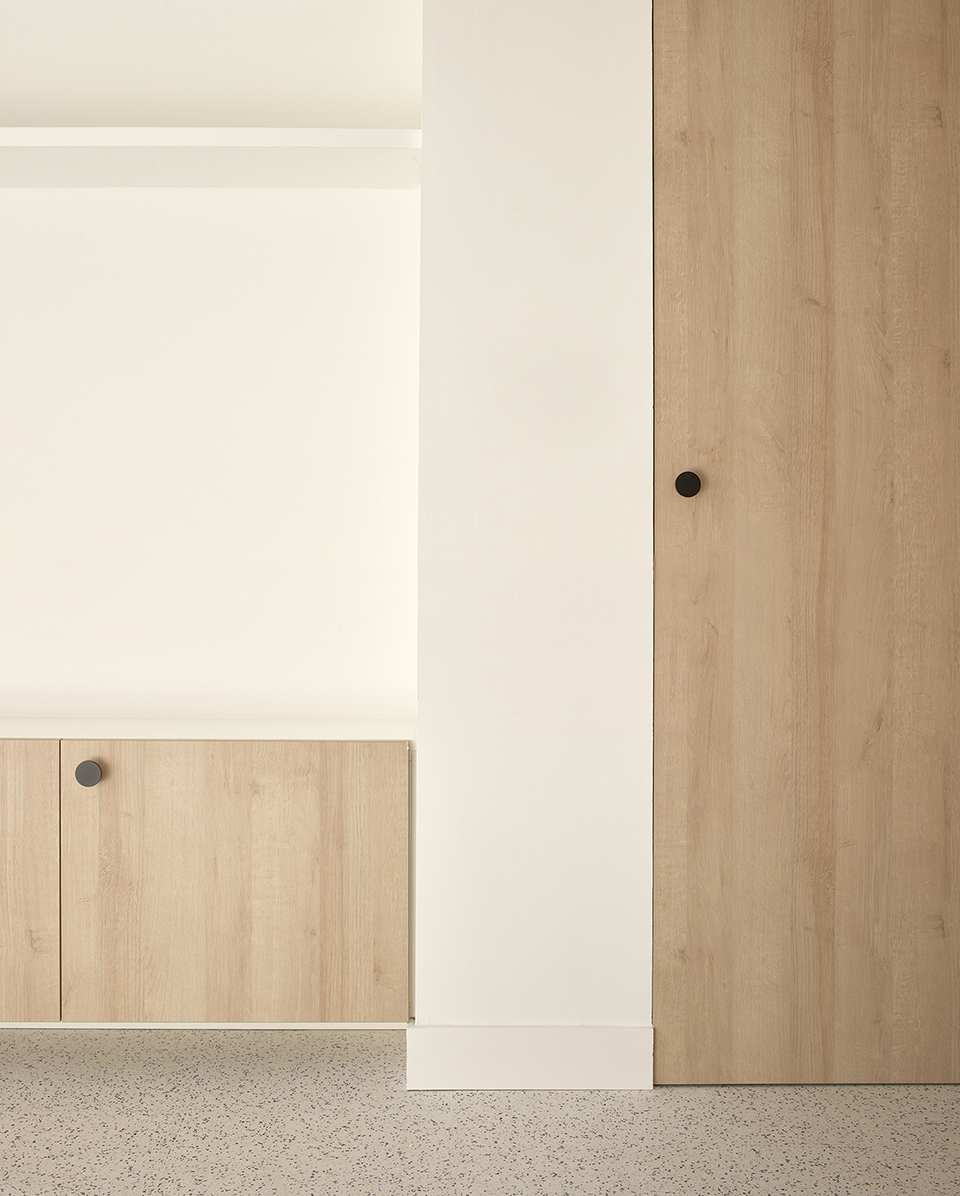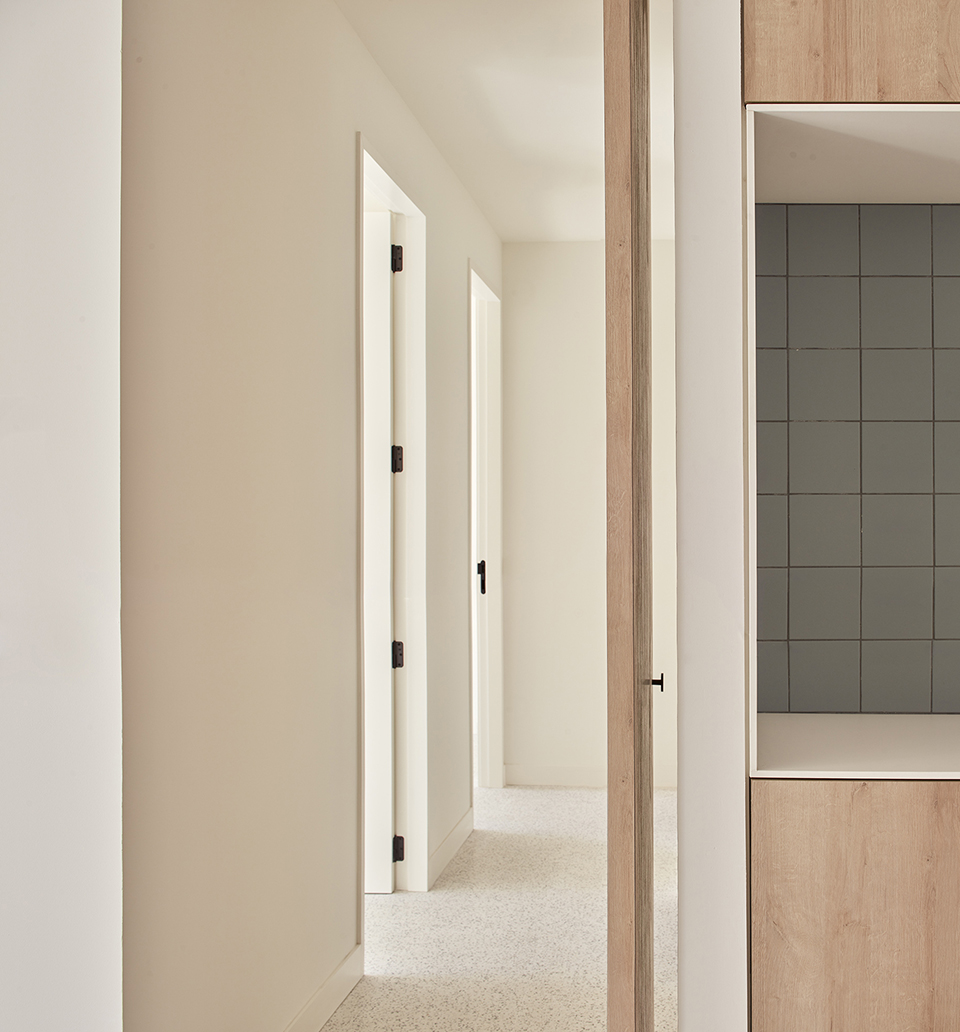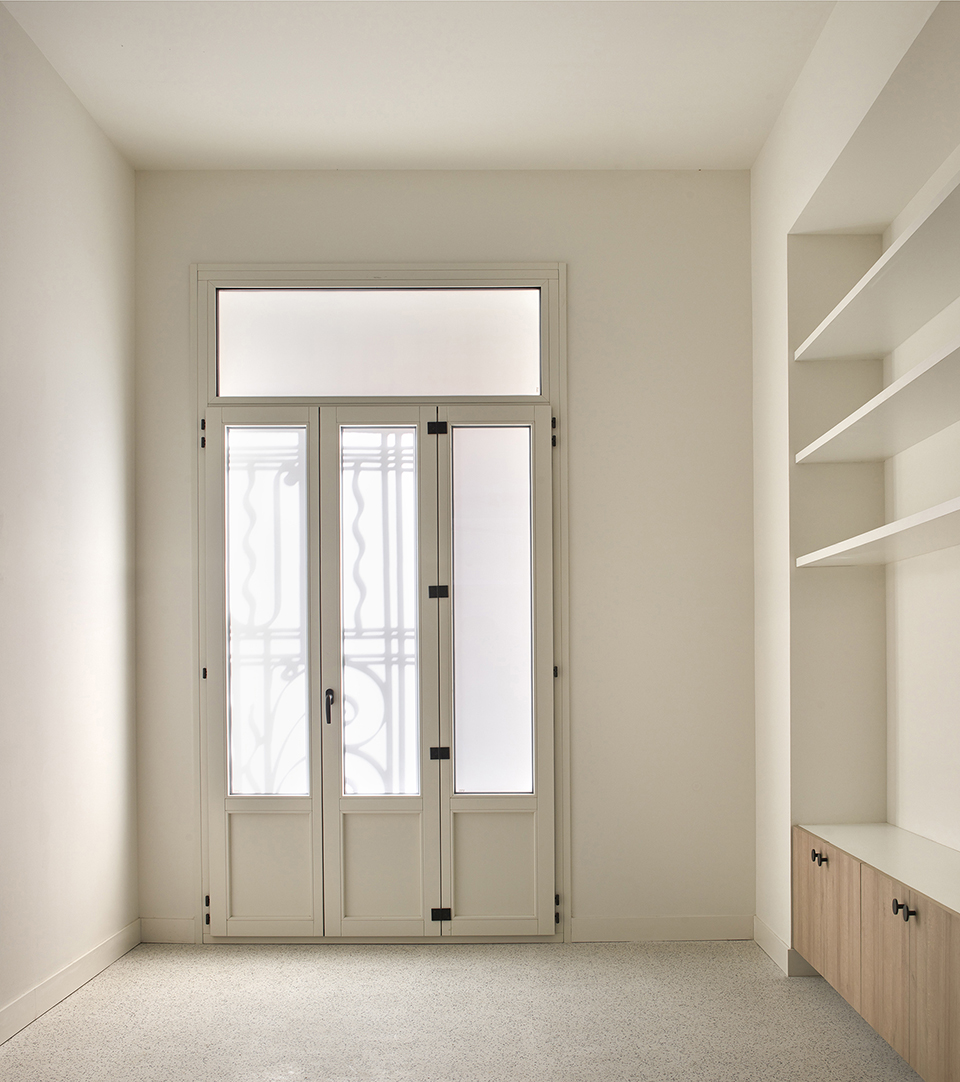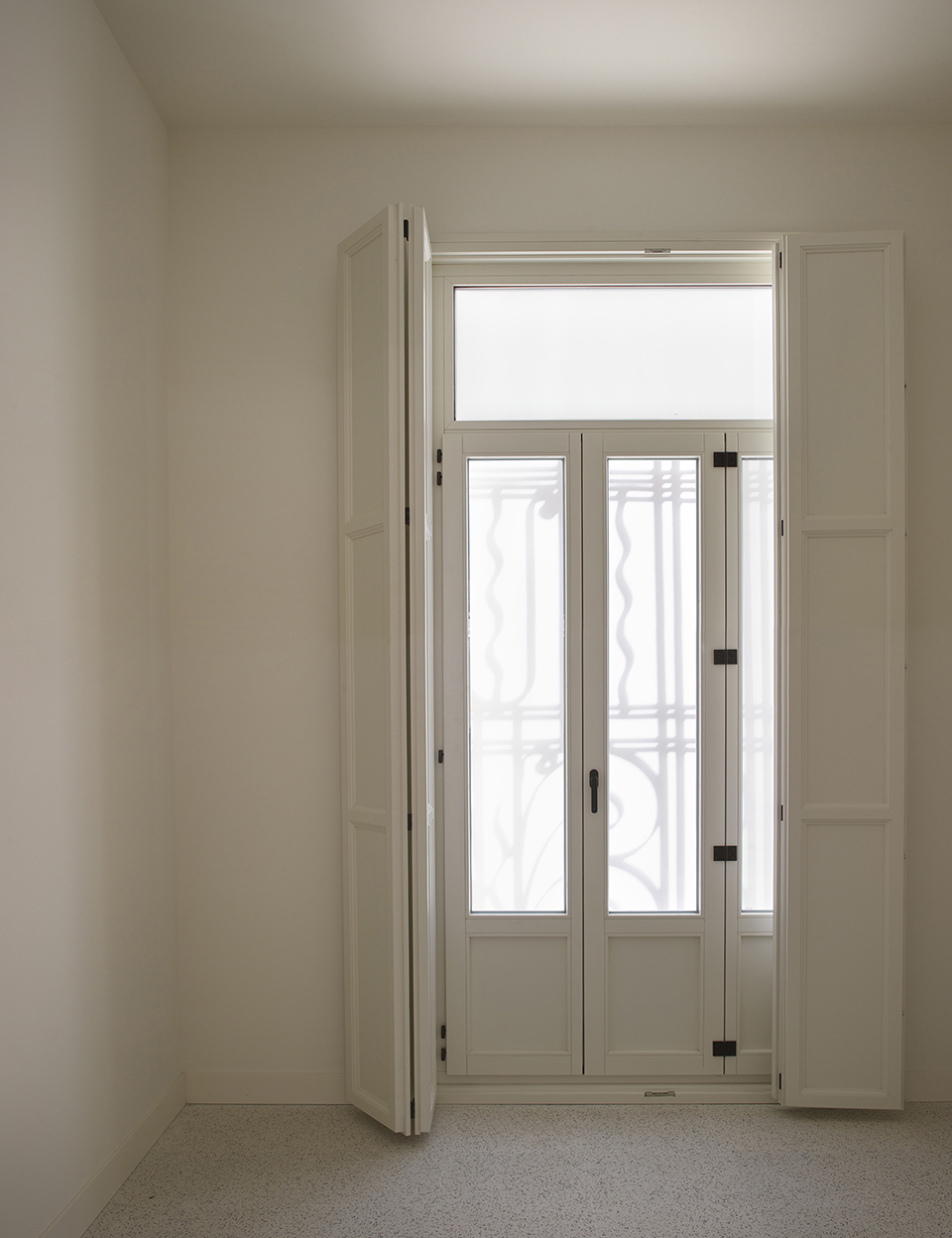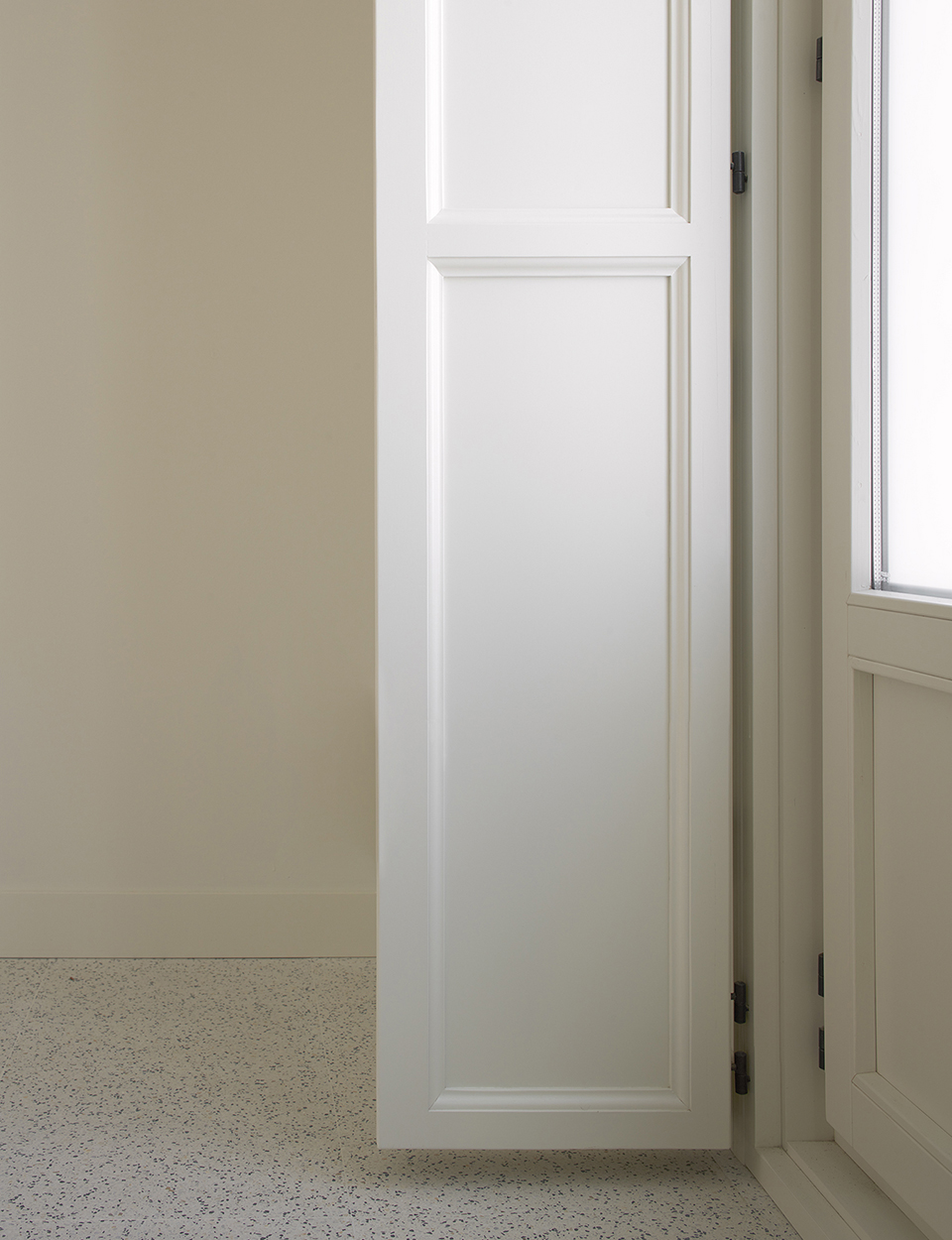让一座位于地中海附近的20世纪初的建筑恢复生机,是设计团队在此次改造中面临的巨大挑战。改造过程中主要进行了三项措施:首先,对结构进行干预,其中包括加固楼板和柱子,从而稳定建筑;其次,对围护结构进行节能改进,这有助于确保房屋符合当前的能效标准;最后,通过调整建筑结构引入电梯,提升了住宅的可达性。
Bringing back life to a building from the early 20th century located very close to the Mediterranean Sea is the great challenge we face in this rehabilitation. Three major actions are carried out during the building’s rehabilitation process. In the first place, an intervention is carried out in the structure that consists of the reinforcement of floors and pillars to stabilize the building. Secondly, an energy improvement of the envelope is carried out, which helps us to ensure that the resulting homes meet current energy efficiency standards. Lastly, accessibility to the dwellings is improved by modifying the structure of the building to incorporate an elevator.
▼住宅外立面,facade ©Mariela Apollonio
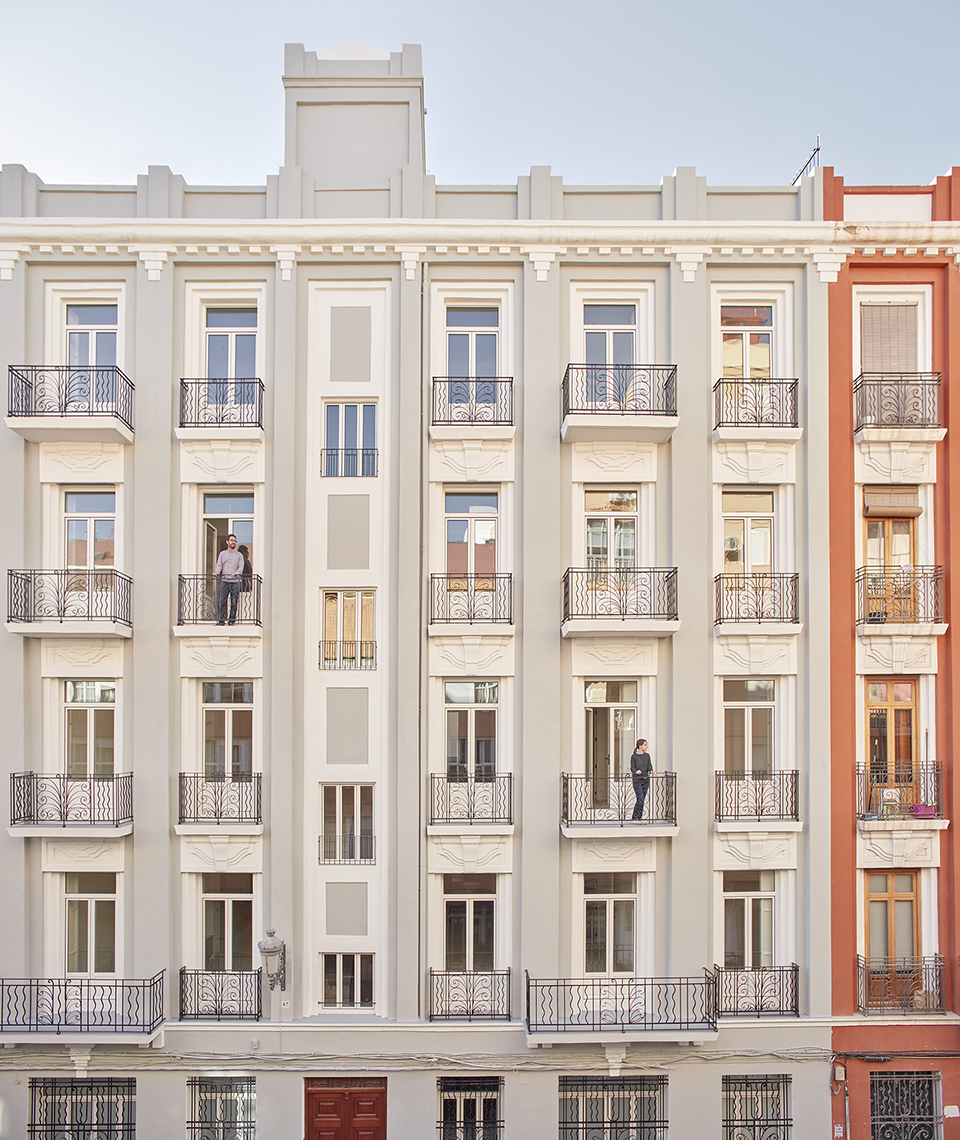
▼立面近景,closer view ©Mariela Apollonio
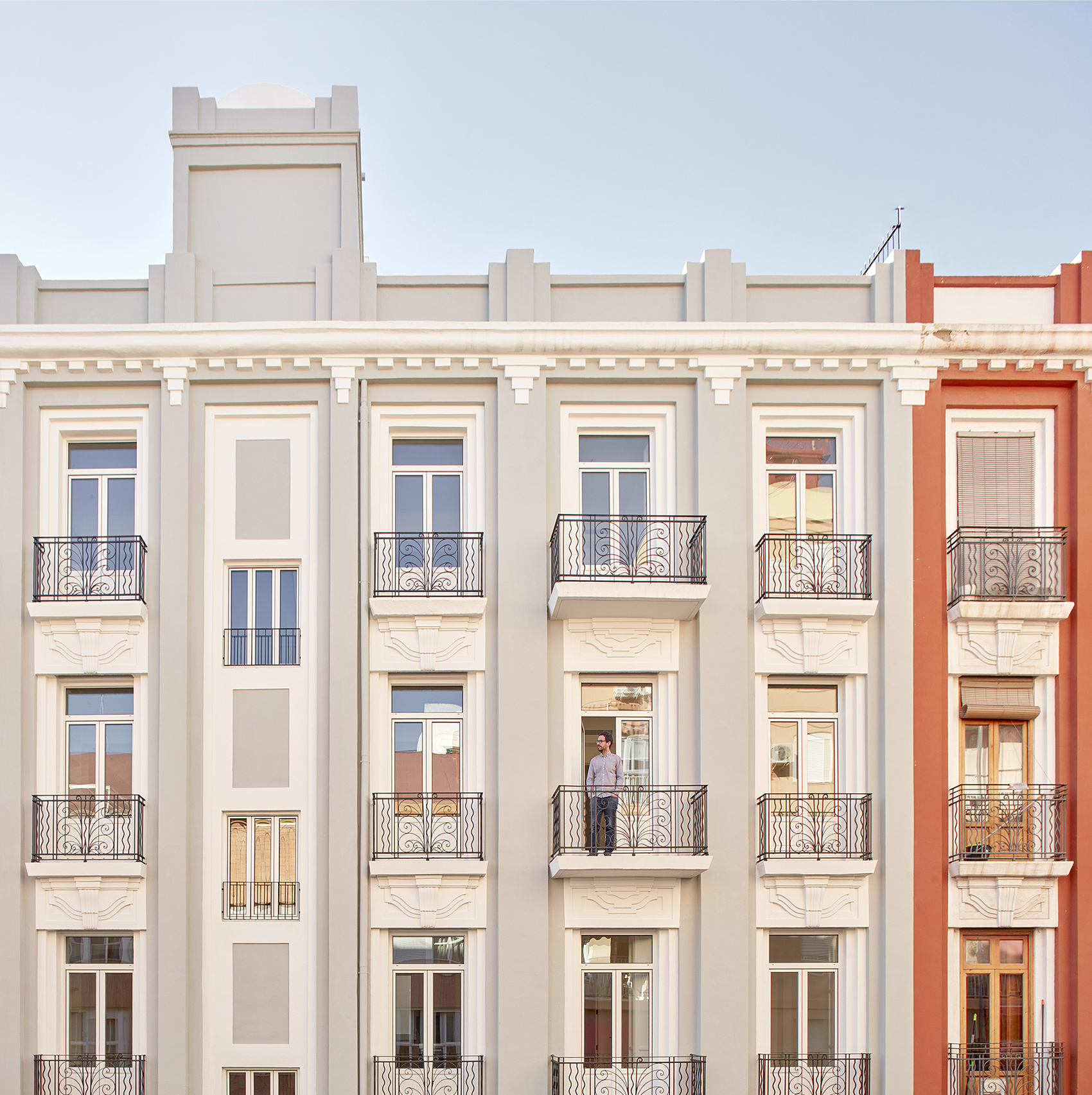
该建筑由11套住宅组成,包括2套底层住宅,它们各享有一个小型内部露台;8套约50平方米的标准住宅,尽管它们尺寸不大,但依然涵盖一个宽敞的厨房/餐厅空间、三间卧室、一间浴室以及一条走廊;顶层小型公寓,它配有大露台,居者可以在这里享受阳光和海景。三种材料和一种颜色定义了房屋内部和建筑公共空间的特征。设计团队设计的水磨石由透明的、几乎是白色的基底和少量的黑色大理石构成,用作公共区域、楼梯、走廊和平台以及房屋内部地面的材料。单一材料有助于实现所有空间之间的连续性。屋内主要空间采用木材,厨房和客厅家具以及将外部与住宅分开的转轴门均由橡木制成。灰蓝色的10×10cm瓷砖划定了房屋的潮湿区。
▼住宅入口,entrance ©Mariela Apollonio
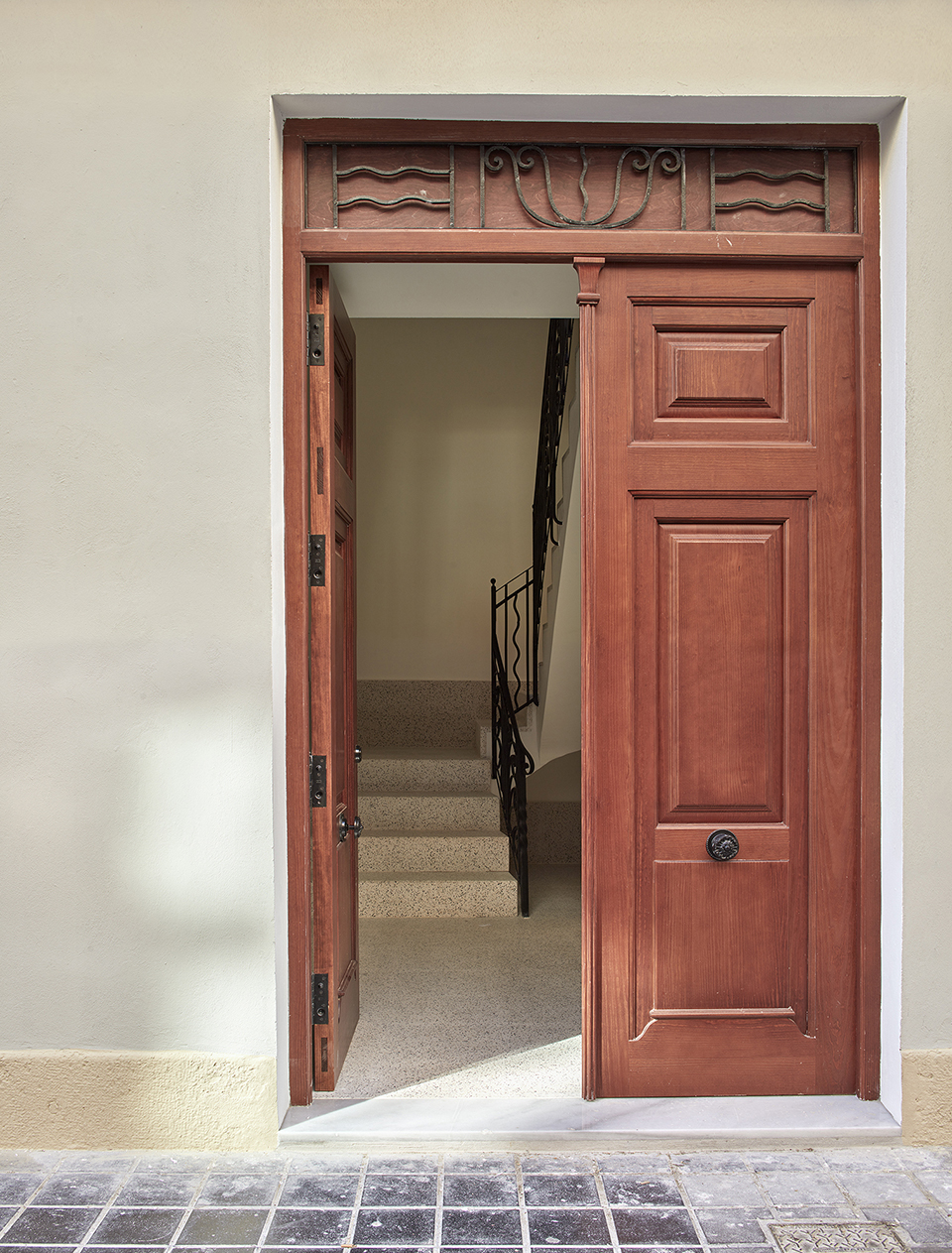
▼门厅,foyer ©Mariela Apollonio
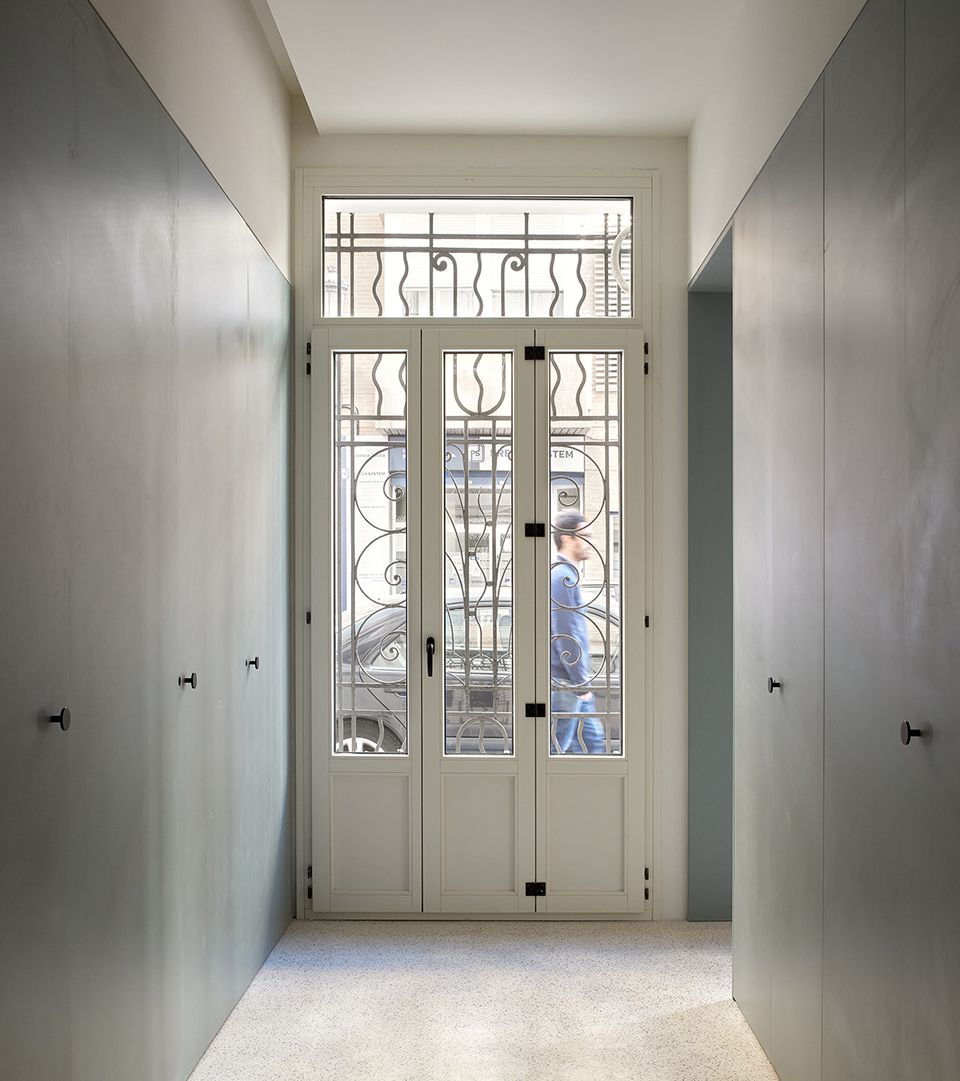
▼走廊,hallway ©Mariela Apollonio
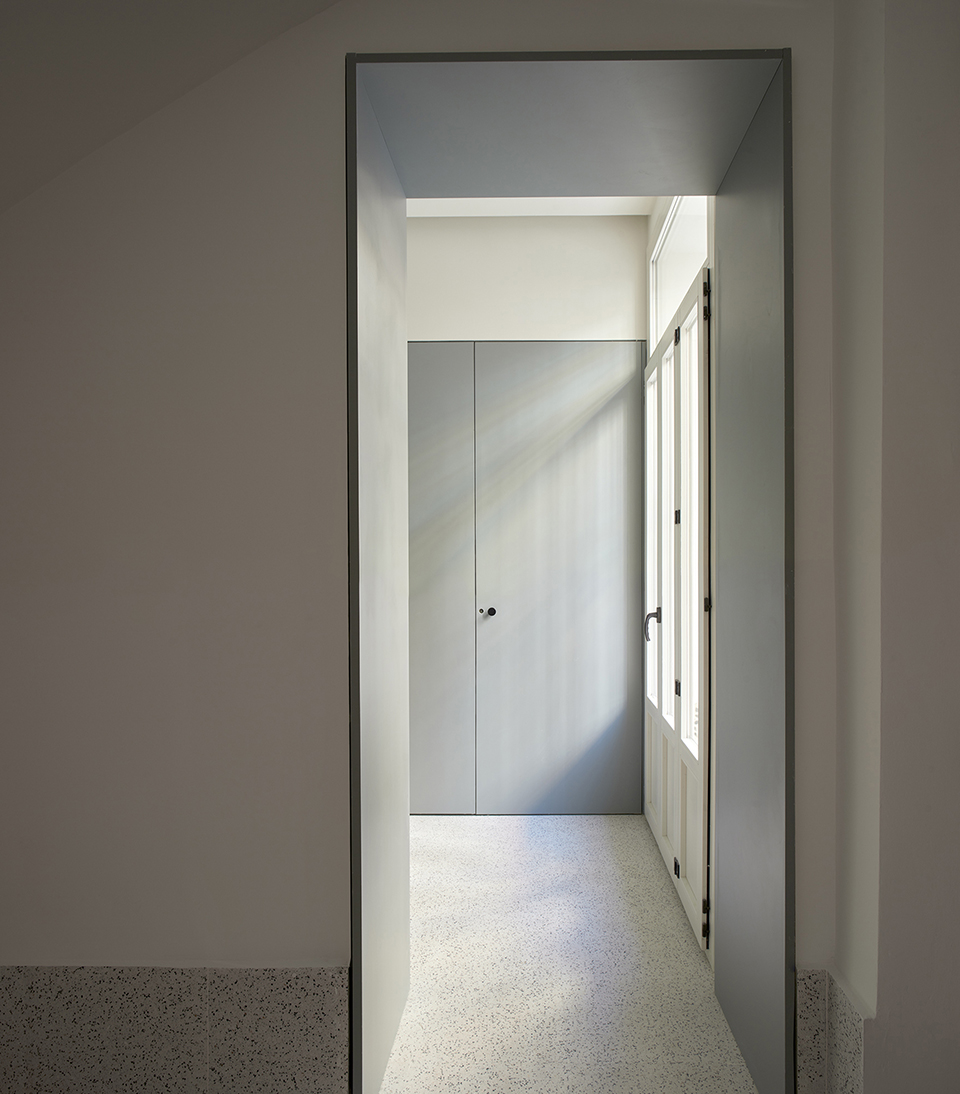
▼楼梯间-连续的水磨石地面,staircase- continuous terrazzo flooring ©Mariela Apollonio
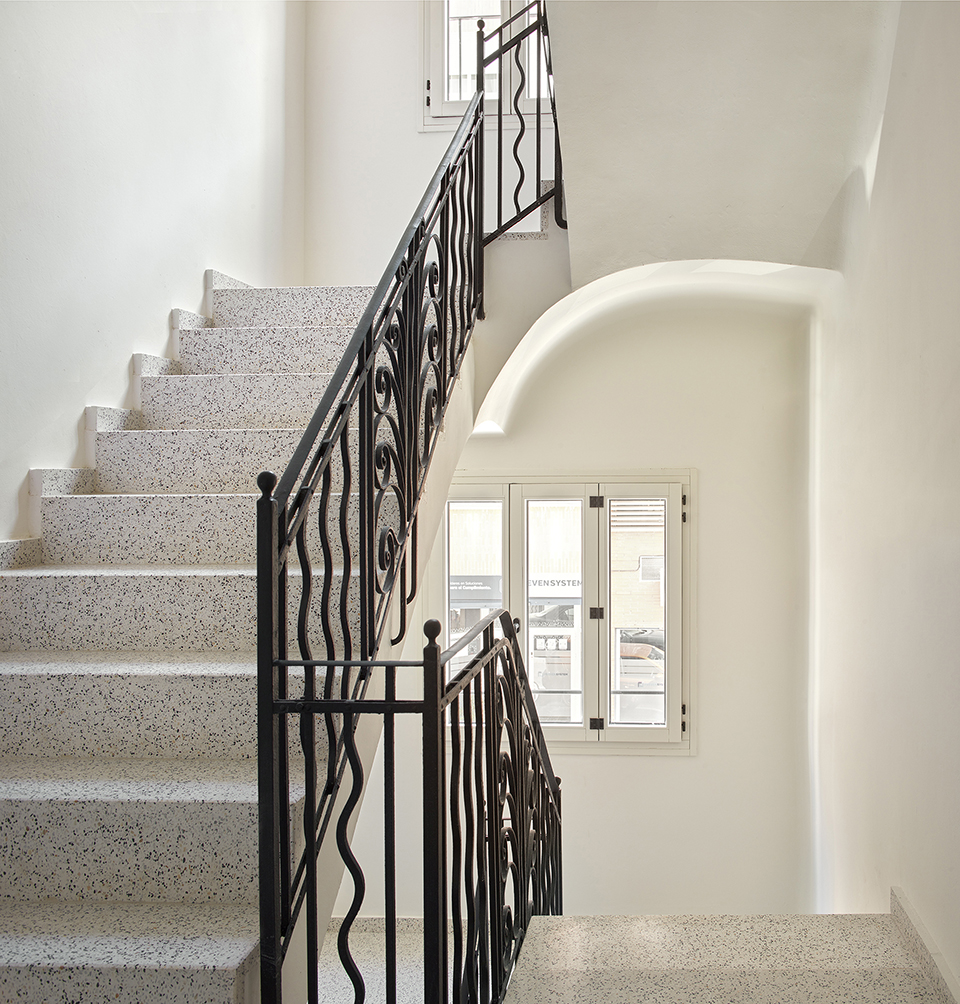
▼楼梯细部,details ©Mariela Apollonio
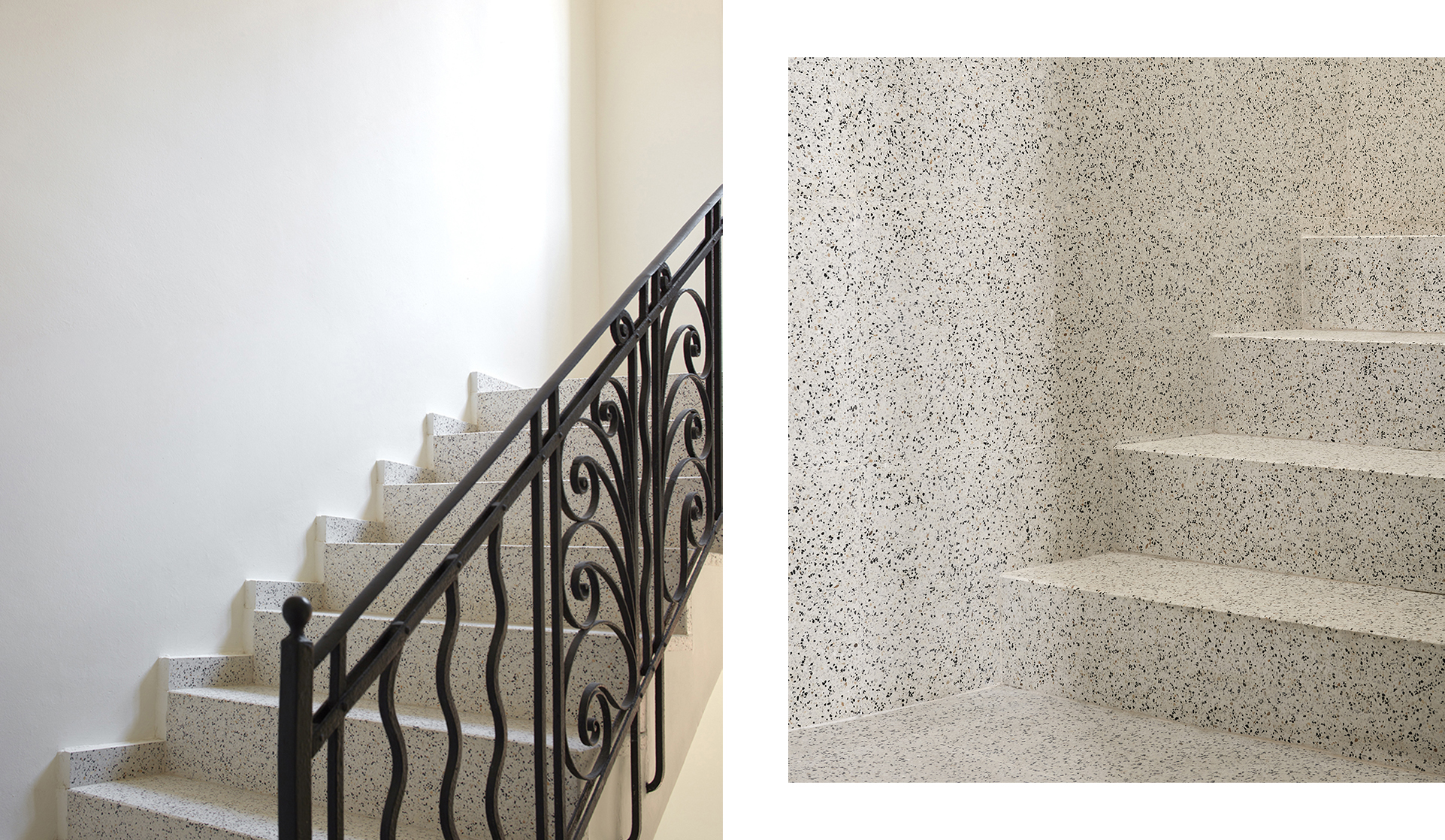
The building is made up of 11 houses, two on the ground floor that each enjoy a small interior patio, 8 standard houses of approximately 50 square meters, which despite their small dimensions are made up of a generous kitchen / dining room space. , three bedrooms, a bathroom and a gallery. On the top floor there will be a small studio apartment with a large terrace from which future inhabitants will be able to enjoy the sun and sea views. Three materials and one color help us define the character of both the interiors of the homes and the common spaces of the building. The terrazzo, which we designed, consisting of a clear, almost white base, and small micrograms of black marble, is the material chosen as flooring for both common areas, stairways, hallways and landings, as well as for the interior of the houses. The use of a single material helps us to provide continuity between all the spaces in the building. Wood helps us define the main space inside the houses. The kitchen, the living room furniture and the large pivot door that separates the day and night areas from the homes are made of oak wood. The grayish blue 10 x 10 ceramic tile delimits the humid areas of the homes.
▼入户门-橡木材质,entrance door- oak material ©Mariela Apollonio

▼底层厨房,kitchen at lower floor ©Mariela Apollonio

▼顶层厨房,kitchen at top floor ©Mariela Apollonio
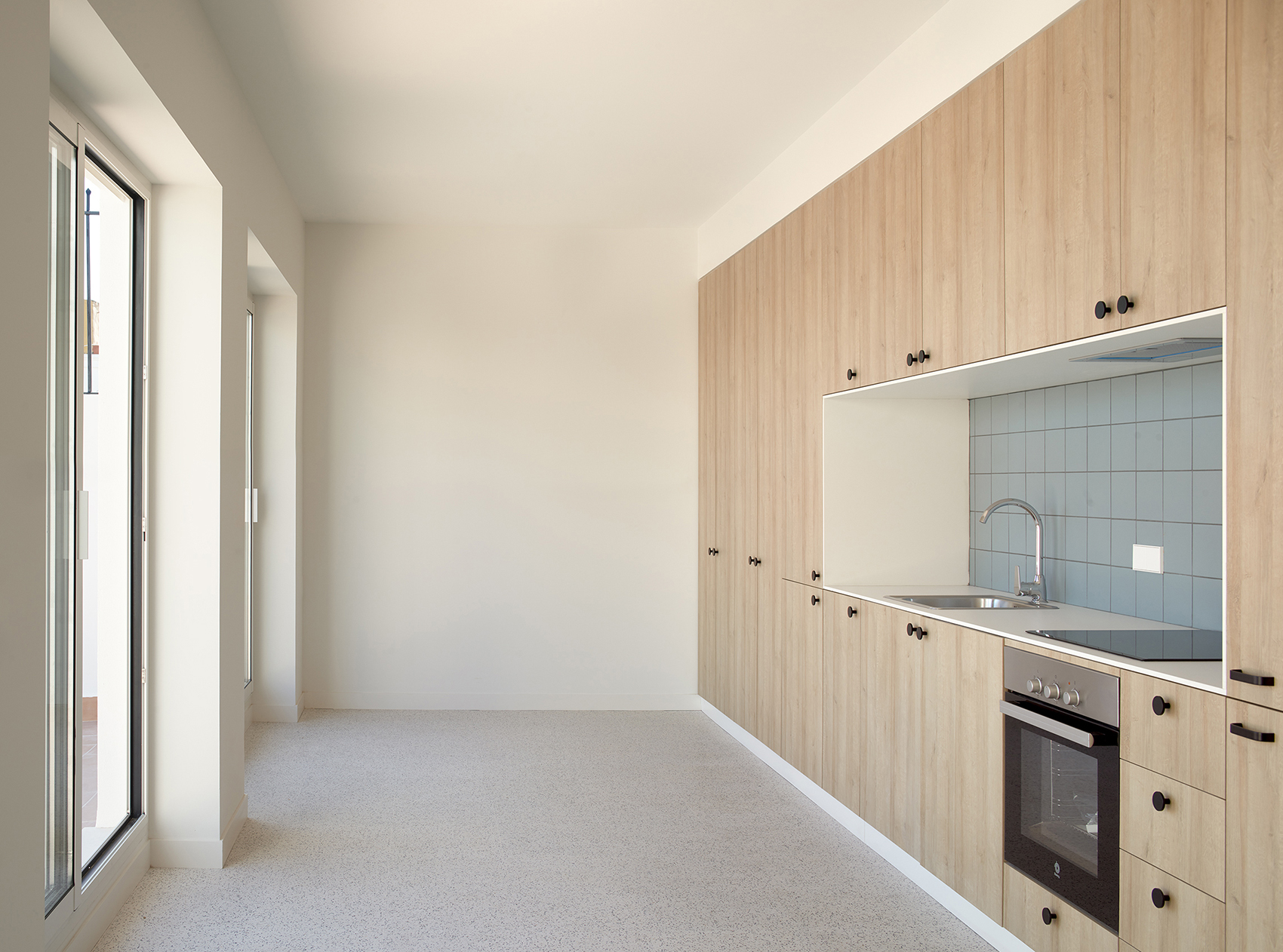
▼木材与瓷砖表面,wood and tile surfaces ©Mariela Apollonio
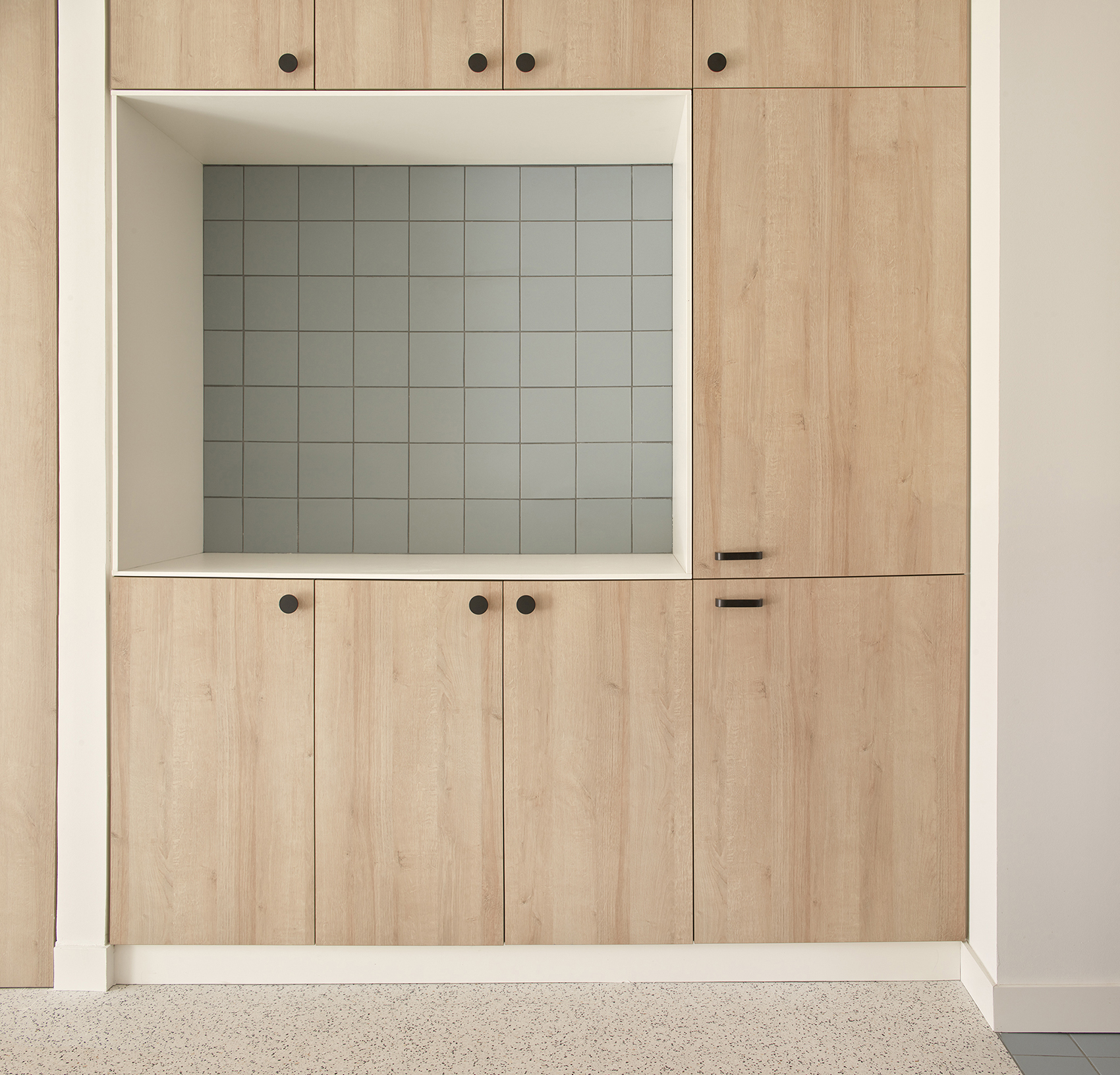
▼空间细节,details ©Mariela Apollonio
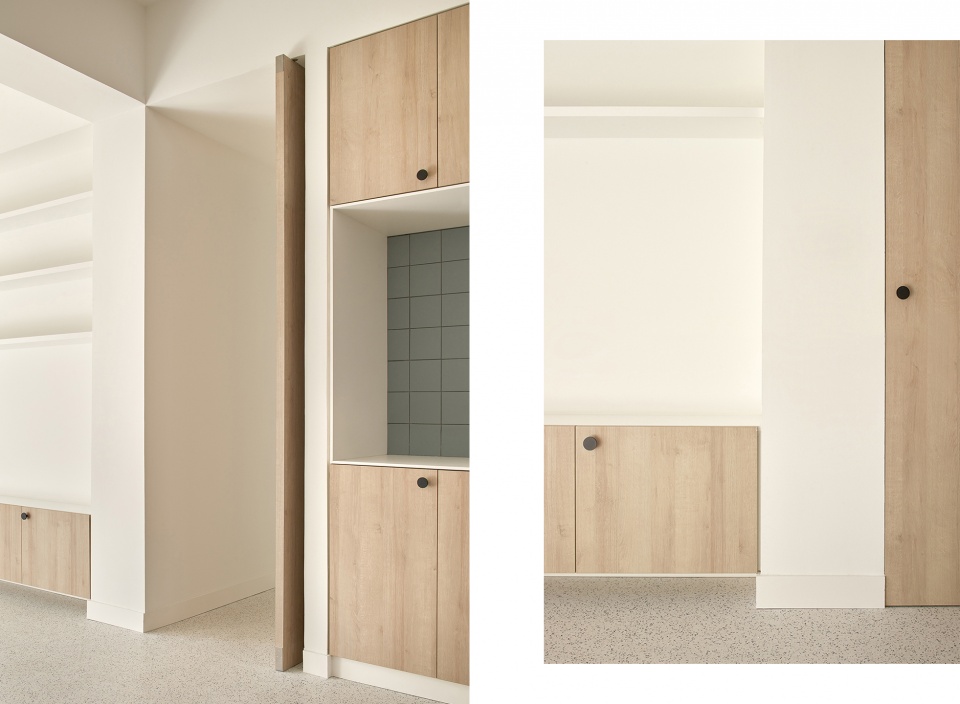
▼阳台,balcony ©Mariela Apollonio

最后,关于干预过程中使用的灰蓝色,它让人们想起地中海如此接近这座城市。蓝色是建筑物所有空间的共同主线,它标志着走廊的入口,伴随居者通过电梯到达住宅,迎接人们进入家中。
Finally, we would like to talk about the grayish-blue color used throughout the intervention and that reminds us of the Mediterranean Sea so close and so present in our city. The blue color serves as a common thread in all the spaces of the building, it marks the access in the hallway of the building and accompanies us through the elevator to all the homes where it welcomes us upon entering.
▼浴室,bathroom ©Mariela Apollonio

▼一层平面图,ground floor plan ©DG Arquitecto
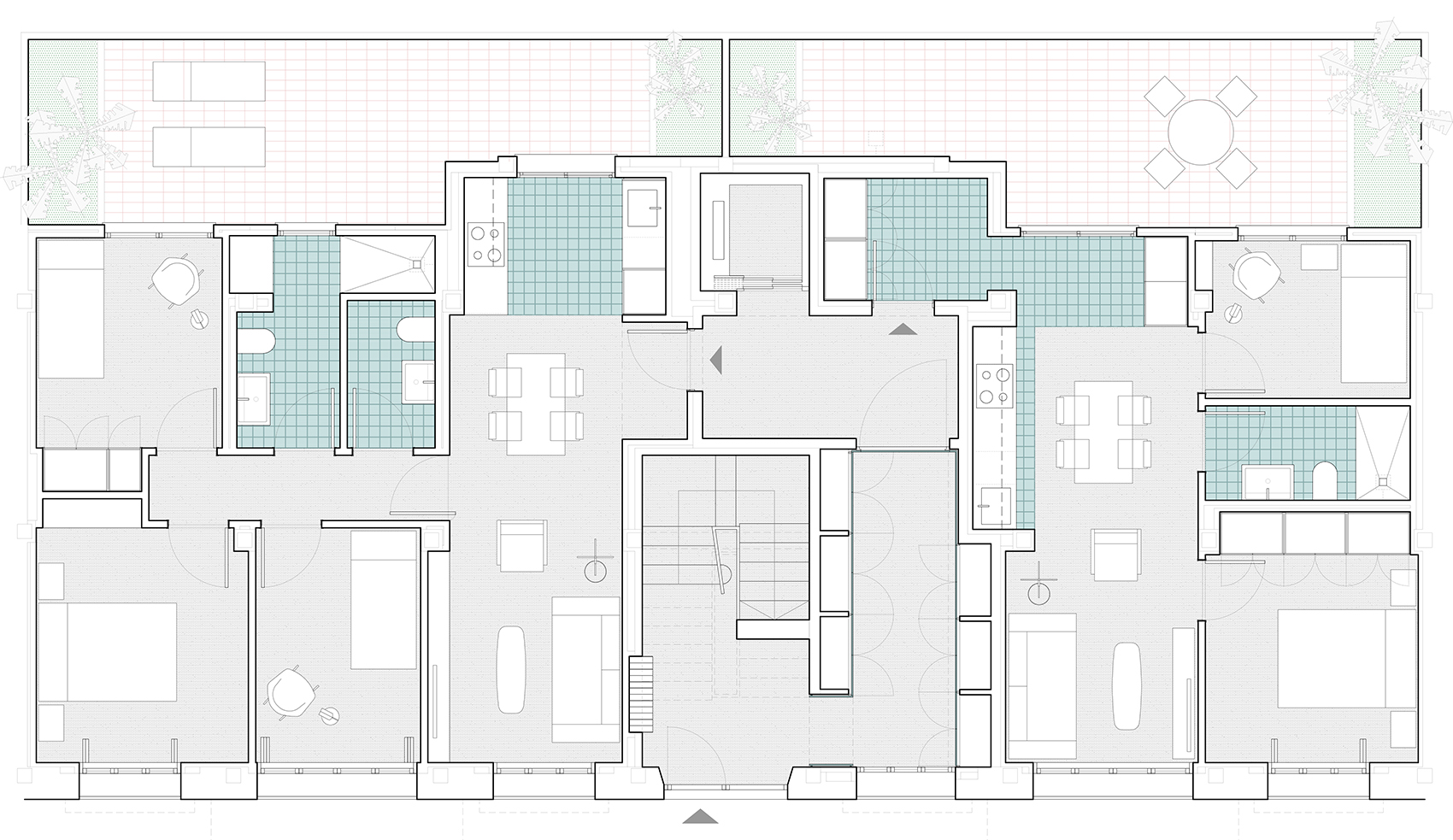
▼标准层平面图,standard floor plan ©DG Arquitecto
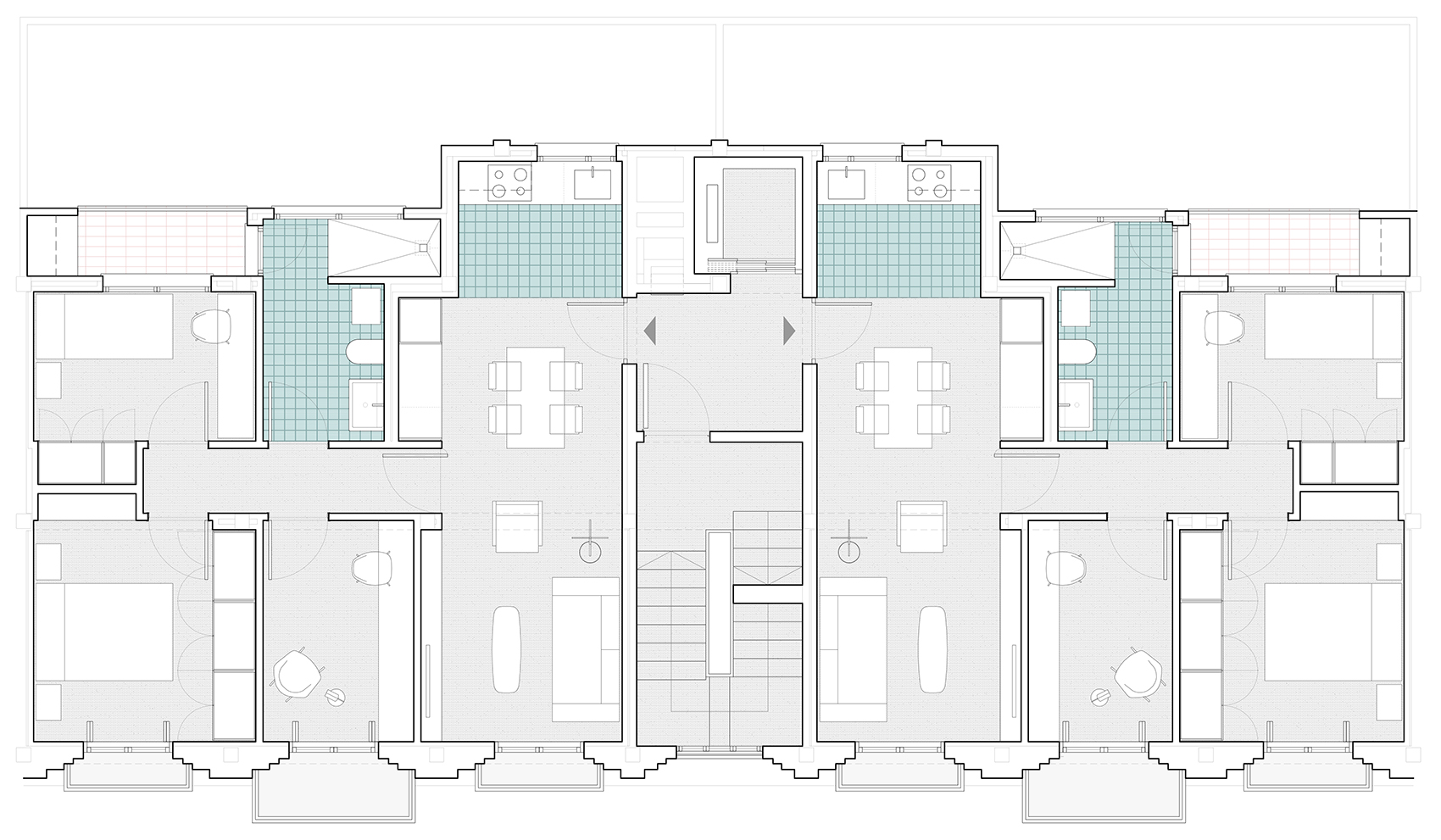
▼顶层平面图,top floor plan ©DG Arquitecto
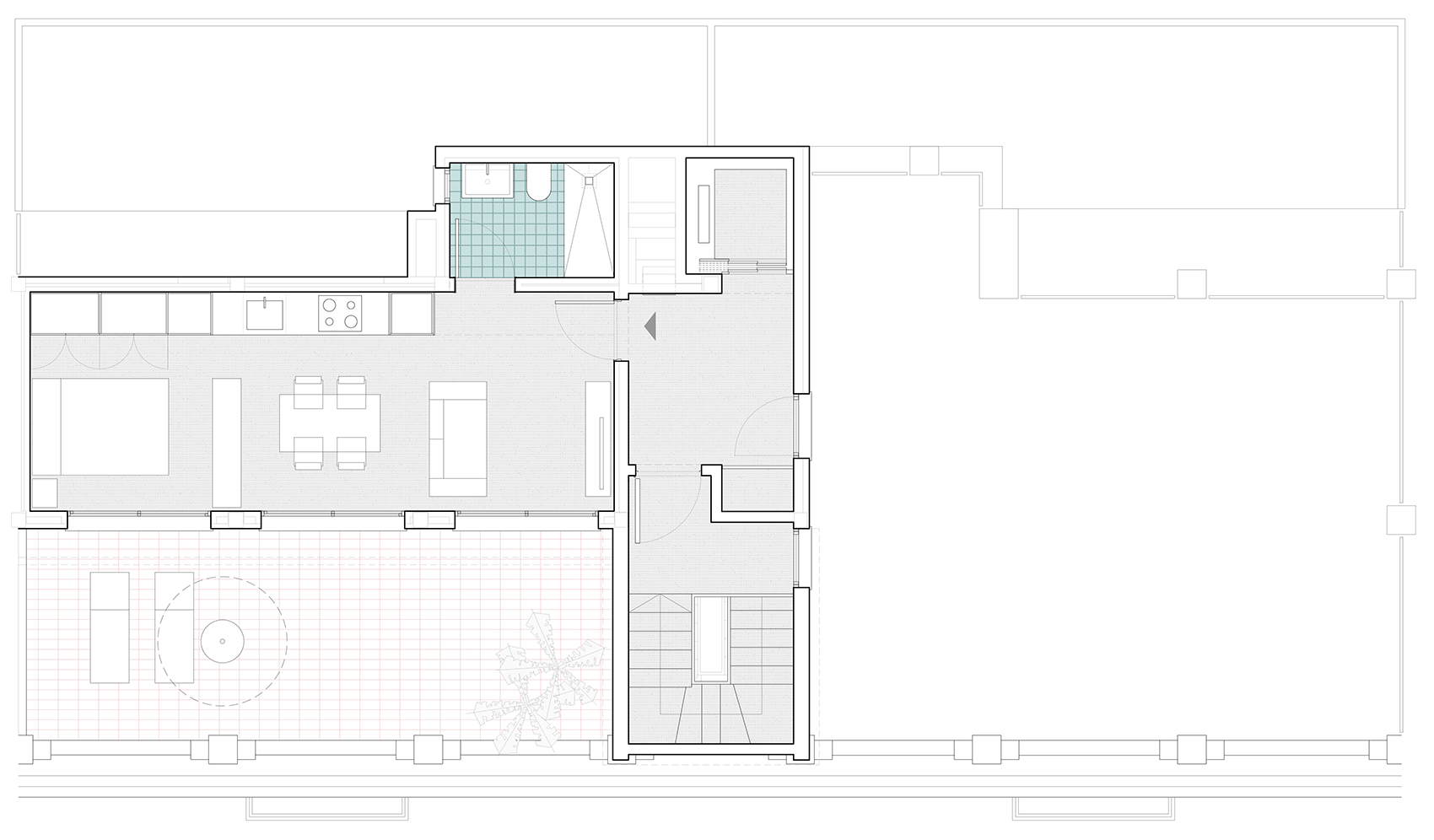
▼立面图,elevation ©DG Arquitecto

▼项目更多图片
